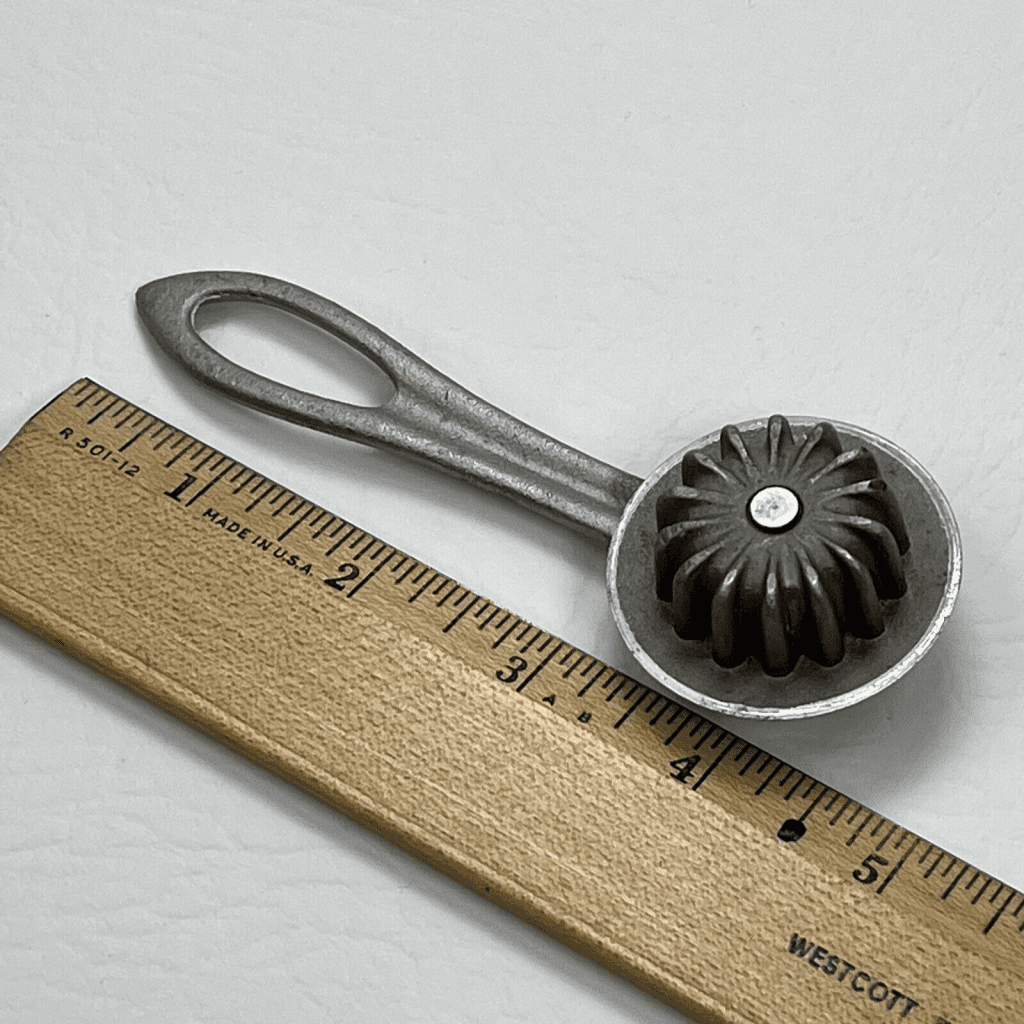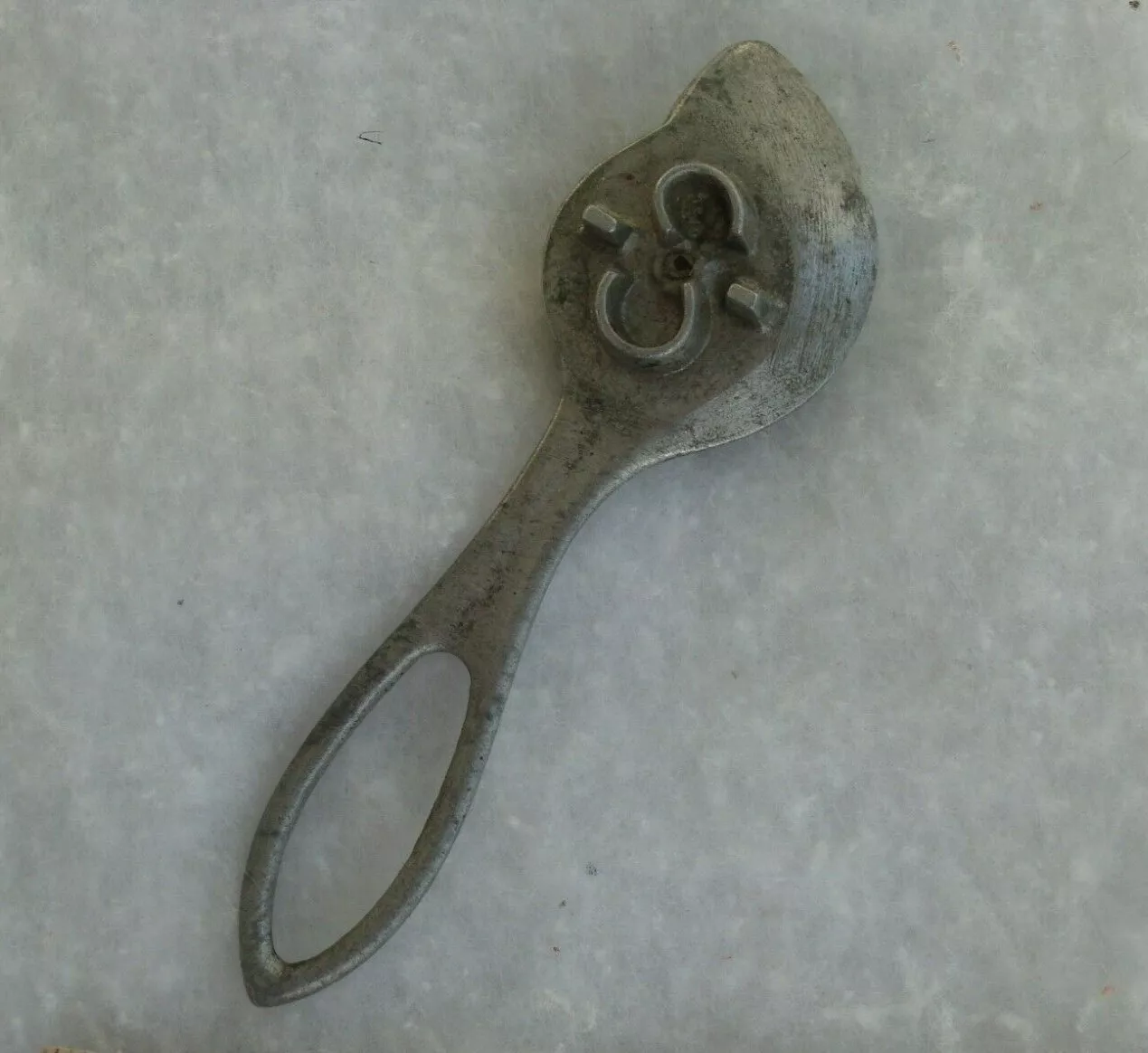Remember those lazy Sunday afternoons spent in Grandma’s kitchen? The smell of freshly baked pies, the warmth of the oven, and the sight of flour-dusted countertops often evoke a comforting sense of nostalgia. Amid the bustling workspace, there was always a collection of well-used baking tools, each with a purpose and a story. One such humble yet essential tool was the pie crust crimper—a simple device that added a touch of artistry to homemade pies. This small gadget, with its fluted wheel and sturdy handle, was a staple in American households from the 1950s to the 1980s.
The Golden Age of Home Baking: A Culture of Craftsmanship

In the 1950s and 1960s, home baking was more than just a task—it was an art form and a family tradition. Baking from scratch was a cherished ritual, often learned at the feet of mothers and grandmothers. Back then, pies weren’t just desserts; they were the centerpiece of family gatherings, a symbol of love and hospitality. Whether it was apple pie cooling on the windowsill or a rich pecan pie gracing the dinner table, these desserts reflected the effort, care, and skills of the baker.
The pie crust crimper was an essential part of this process. It wasn’t just a decorative tool; it served a functional purpose by sealing the pie’s edges, preventing the filling from spilling out during baking. Its signature crimped pattern added a homemade touch to each pie, making it both beautiful and practical.
The Evolution of the Pie Crust Crimper: From Utility to Nostalgia
The design of the pie crust crimper dates back to the 19th century, but it reached its peak popularity during the mid-20th century, aligning perfectly with America’s booming domestic culture. Made from durable materials like metal or wood, crimpers were built to last, symbolizing the quality of tools meant to be passed down through generations.
Before the convenience of pre-made pie crusts and frozen desserts, crimpers were a must-have for any home baker. They were often found among the neatly arranged utensils in kitchen drawers, always ready to transform plain pie dough into something special. Each crimped edge was a testament to the baker’s dedication, effort, and pride in creating something from scratch.
The Symbolism of the Pie Crust Crimper in Home Baking
Beyond its practical use, the pie crust crimper represented more than just a kitchen tool. It embodied the spirit of home cooking, family traditions, and the joy of making something with your own hands. Every time a pie was pulled from the oven, its perfectly crimped edges carried the promise of a delicious treat and a moment of shared happiness.
Baking wasn’t just about feeding the family; it was about creating memories. The act of using a pie crimper was often accompanied by stories, laughter, and the wisdom of generations. It was a way for families to bond, with each twist of the wheel adding a new chapter to the family’s story.
How the Pie Crust Crimper Became a Vintage Artifact
As time passed and convenience foods gained popularity, the role of the pie crust crimper began to fade. Ready-made pie crusts and bakery-bought desserts replaced the need for intricate homemade details. Yet, for many, the pie crimper remains a symbol of a simpler, more personal era in American kitchens. It’s not just a relic of the past—it’s a reminder of the beauty of traditional home cooking and the values that accompanied it.
Today, vintage pie crust crimpers have become collectible items, valued not only for their functionality but also for the nostalgia they evoke. They’re often found at flea markets, antique shops, or on online platforms, attracting both collectors and home bakers who wish to bring a touch of history into their kitchens.
Memories Made with the Pie Crust Crimper

The pie crimper carries the weight of countless memories—an heirloom that symbolizes love, tradition, and the art of baking. It brings back vivid memories of entering Grandma’s kitchen, where the smell of cinnamon and apples filled the air. Grandma’s hands would guide yours as she taught you how to press down on the pie’s edge, creating those perfect fluted patterns. You could feel the warmth of the oven and the joy of sharing a delicious creation with the people you loved.
Every time you use a pie crimper, it’s like holding a piece of history. The rhythmic motion of rolling the fluted wheel along the dough isn’t just a step in the baking process; it’s a ritual, a connection to past generations who took pride in making pies from scratch. It’s a reminder that even the simplest tools can create the most meaningful experiences.
Bringing Vintage Charm to Modern Kitchens
Today’s kitchens might be filled with advanced gadgets and pre-packaged ingredients, but the pie crust crimper still holds a special place for those who appreciate the art of traditional baking. It brings a touch of vintage charm to any pie, whether it’s a classic apple pie, a savory pot pie, or a modern twist on a fruit tart.
Using a crimper allows bakers to add a personal touch to their creations, making each pie unique and reminiscent of a bygone era. It’s a nod to the past, a small but significant gesture that honors the tradition of homemade desserts.
Conclusion: Celebrating the Legacy of the Pie Crust Crimper
The pie crust crimper is more than just a kitchen tool; it’s a cultural artifact, a symbol of a time when baking was as much about creating memories as it was about making food. It reminds us of the values that defined mid-20th-century kitchens—patience, craftsmanship, and family connections.
So, the next time you find yourself in the kitchen, consider reaching for a pie crust crimper. It’s not just about making the edges of your pie look beautiful; it’s about embracing a tradition that has brought joy to countless homes. With each crimp, you’re not just baking a pie—you’re recreating a slice of history, infused with love, laughter, and the warmth of family gatherings.


